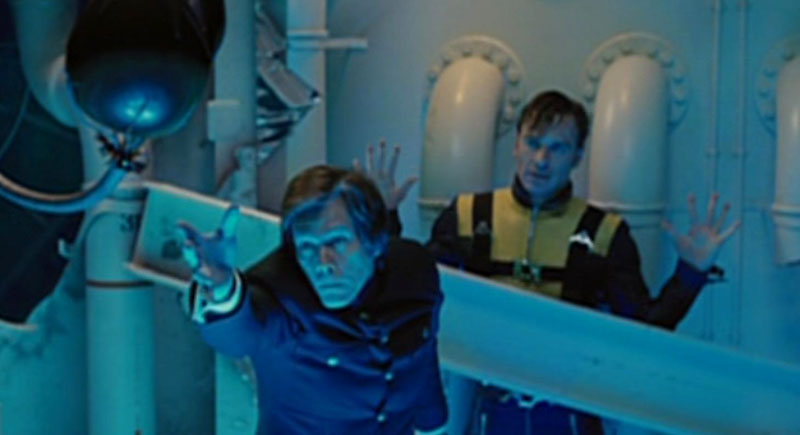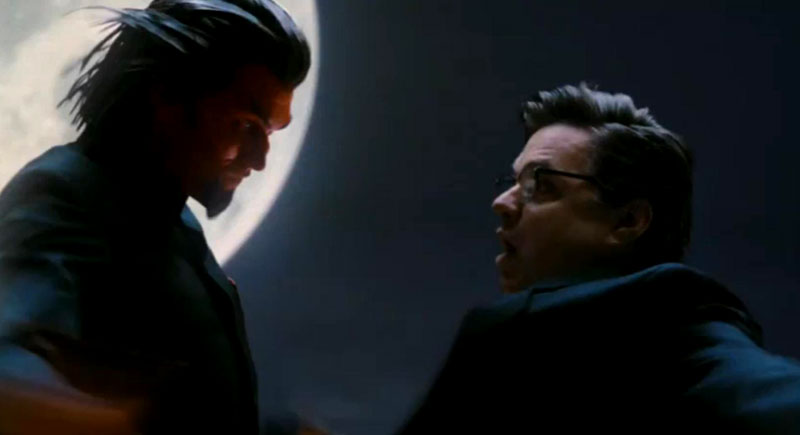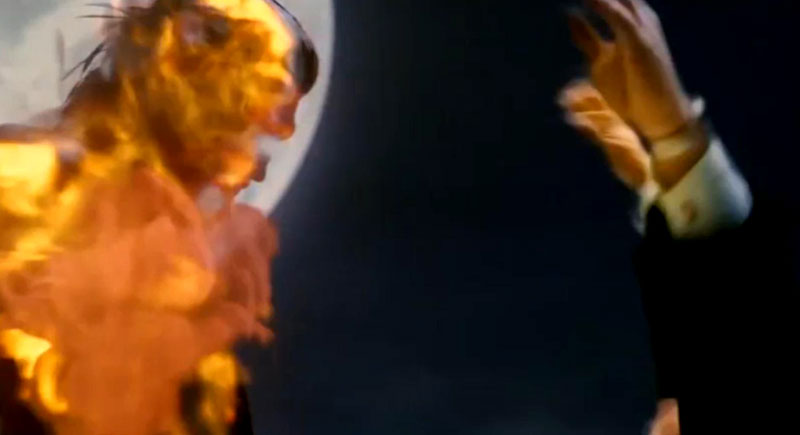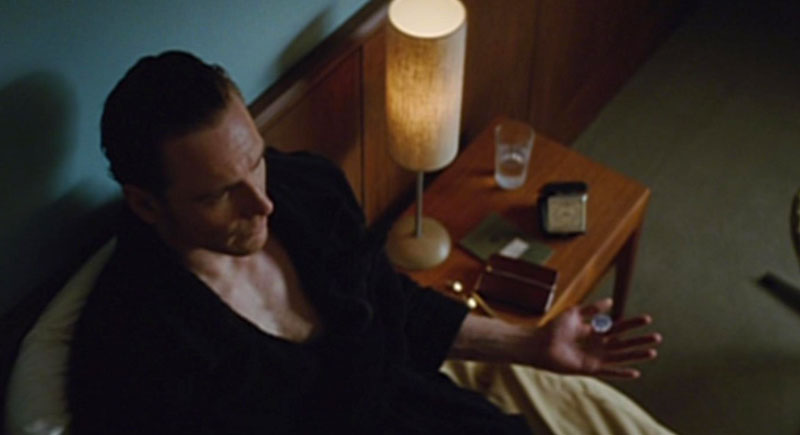
|

|

|

|

|

|

|

|

|

|

|

|


Q: Can you give us a quick description of what exactly you do as a visual effects designer?
A: Well, it's sort of been an evolution. Visual effects design is the integration of the technologies that constitute visual effects into the execution of a movie that could be anything from doing simple composites or the removal of something in a scene that didn't want to be there to the complete creation of scene and all of its components from scratch. Examples of all the components from scratch would be something like 'Avatar.' The other end of the scale is something you've seen a million times but didn't realize you've seen it because there was no artifact left - usually it's something like they left the catering truck in the shop and we had to paint it out. So, that's sort of the spectrum. When you go to work, what you do is you take the written page, interpret it into a sketch of some kind which you can express to the director what it is you're trying to create for him to get across what's on the written page, and then you generate those sketches into more specific and more sophisticated artwork all the way through animation as tools to communicate with others who are department heads on the production the art department, the mechanical effects department, the director of photography, etc. - so that everybody is working from the same visual script. Unfortunately, visual effects is [a] complex medium that invariably involves more than one element in fact, a simple definition of visual effects is two or more elements executed in different times that are combined to appear as if they were executed in a single moment. As you can understand, the more pieces that you have to put together, the more complex the logistics is of capturing each of those individual pieces and keeping track of them, integrating them, into a final composite in a way that is believable.
Q: It sounds like your job sure keeps you busy.
A: Yeah, busy. Is that too convoluted an explanation?
Q: I watch plenty of Blu-ray special features, so we're on the same page. I'm with you. Does this job require you to be present during all phases of production?
A: Pretty much... I have the good fortune of the kinds of movies that I work on to generally be involved as early as when the script is being generated and stay all the way through, one of the last people to finish up aside from the editor and director. Because we touch so many of the shots, especially in the big feature films, and those shots have to be delivered and slotted in in the last minute because we always use up all of the time.
Q: I've noticed a gap in between all the films that you work on. Now I know that it's because you're constantly involved through the entire process.
A: You know, at this particular point I'm kind of picking and choosing the kinds of films that I work on. It would [be] okay to work all the time, but it's pretty innervating. It's a tough challenge and you need to regroup from time to time. And besides that, life is too short.
Q: And you've been doing this forever. Looking back at your credits, you've done lots of huge movies. You've got 'Star Wars' on your resume! As the industry and technology has changed, how has it been to change and learn along with it?
A: You have to really like to learn to be in this business. Part of the fun of it is going out and having someone say to you, You have to make something that looks like an exploding galaxy, or, You have to figure out how to turn all of the people on the Sunset Strip into Irish setters. Nobody knows how to do it, so they come to you and ask you this perverse or just totally ... undoable thing, and you have to figure out how to come up with an answer for it and you have to do it fairly quickly. And that's the fun of it a different, new challenge every day, or multiple times a day. You have to like that to be in this business. Having said that, one of the things that came from 'Star Wars' was that in those days [you] had to actually photograph everything. Visual effects being, as I said, multiple elements combined to create a final image, you had to put those individual pieces in front of a camera, photograph them, then composite them in an optical printer. Because you physically had to photograph this stuff, you ended up with all of the constraints of the real world cameras so big that you could only make the subject so small, otherwise you can't get the camera up to it. Or the camera wants to go through an opening, but the camera won't go through, so you have to build the subject over scale so that you can pass the lens through. Or you have to photograph things at an extremely high speed so the reduction in speed increases the sense of scale so the small chemical reaction can look like an expanding galaxy. That era was mostly about how you did it. You had to figure out what you wanted to do and you conformed what it was you wanted to do to what you discovered you could do. You spent most of your time discovering out how, and over the course of that, you spent some of your time figuring out the what. With the advent of digital imaging the ability to do virtually anything you can conceive of, it became much more of an issue a responsibility to spend more time figuring out what it was you were putting on screen that it was to figure out the how to do it. I think that has certainly changed the nature of visual effects and how it contributes to the filmmaking process. It's certainly contributes to how much visual effects you see in movie making these days. Some of the things done contemporarily simply could not be done mechanically. That's the advent of the mechanical solution, the analog solution, as opposed to the virtual or digital solution. The part that spans both of those from a visual effects designer's point of view is figuring out what it is you're going to put on screen not just how, but what it is and how that relates to the story.


Q: What were some of the things that they brought to you in beginning for 'X-Men: First Class?' Were there any unique things that come to mind?
A: Oh, yeah! And they had to be unique. Prerequisite is that it has to not offend the people who are advocates of the comic book and it has to not offend the people who are the advocates of the [movie series] and it has to unique, unlike anything they have ever seen before. A good example of that is Diamond Girl. She appeared in the movie and in the comic book, but we wanted to make a unique version of Diamond Girl and I think we succeeded. That particular manifestation of her power is kind of unlike anything that I've seen before as a representation of what Diamond Girl looked like. That was Emma Frost, but another example of that is the Shaw character Kevin Bacon. It's another example of getting to interpret a still image from a comic book and - he hadn't been shown in the movies so we had an open hand there trying to figure out how the absorption of energy would manifest itself visually, which was really fun. It was totally informed by Kevin Bacon's performance. We had a time constraint that was significant on this movie and as a result we were developing the character's look while we were photographing them on stage. The actors themselves contributed significantly to what the final look of the character's power manifestation looked like. So the actors contributed significantly to the integration of their power into the telling of the story.
Q: So you work a lot with the actors?
A: Yeah.
Q: Then I've got to ask because I'm a big fan: You've done two films now with Michael Fassbender, 'X-Men' and 'Inglourious Basterds'.
A: Yeah, I like Michael.
Q: How is it working with him?
A: He's great! He's terrific! He's totally invested in the making of a movie. He puts the making of the movie first. He is a gentlemen. He's charming. And he's dangerous. (laughs)

Q: How was Matthew Vaughn?
A: Oh, he's great. I really enjoyed working with Matthew. The thing that's interesting about him to me is that he has both a tactical point of view and a strategic point of view. So often when you have tight time constraints, it will stress the director to the point where they will invest everything in one or two scenes and don't end up with enough scenes in total to make the movie complete or they go the other way, race through everything and end up with mediocre material. He seemed to have a very acute sense of how to pick out the stuff he focused on. Eddie Hamilton and Lee Smith, the editors, contributed significantly to how the visual effects and story integrated.
Q: With just a few minutes left, I want to ask you a few questions on the movie and TV series you worked on. Since you worked on both of the original films, are you a bigger 'Star Wars' or 'Star Trek' fan?
A: 'Star Wars,' by all means.
Q: What about 'Battlestar Galactica?' Did you watch the newer series?
A: I've watched it. It's funny you know, it's completely different from what I worked on.
Q: Did you see J.J. Abrams reincarnation of Star Trek?
A: I watched it. But you know what I don't spend a lot of time watching TV. I go and see movies occasionally, specifically movies that either contain stuff that I think is important of films that have been recommended to me by friends, but I don't see everything that's out there.
Q: You're too busy making them, right?
A: Sort of. What I want to do is save my moviegoing experiences for things that I can enjoy, as opposed to simply flooding my brain with movie images.
Q: Do you get a lot of ideas for visual effects by watching other movies?
A: Sure. But I get ideas from everything. I get ideas while walking the dog. There are ideas everywhere. In fact, that's part of the funnest things about being a visual effects designer - you can incorporate stuff from listening to some science broadcast where you hear about magma that forms tubes underwater and brings to mind an idea for the execution of some creature that you want to develop. The cross-fertilization that happens in everyday life and visual effects design is critical. In fact, people who come to me in the contemporary environment and say, I want to become a visual effects designer. What should I do? I say, Get out more. The tendency is for so many people to be involved with the box and their primary source of visual stimulation that you [must] get out, go, and do some hiking. Fly a plane. Ride a motorcycle. Do something where you come in contact with your environment in a much more aggressive, much more present way. I think that's critical to making stories and images that come off a two-dimensional screen in a way that affects people.
Q: Do you think you'll be back for more 'X-Men?'
A: I don't know. I'd like to. I don't know what they're doing now.
Q: I hope they keep it going. 'First Class' is my favorite of the bunch.
A: Good! I'm glad. It's my favorite of the bunch too, that's for sure. But it's the only one that I worked on. (Laughs)
Original Source is here
